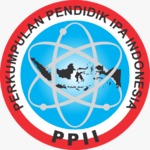Radiation Dose Determination and Body Mass Index (BMI) Evaluation in Abdomen CT Scan Examination Patients Using the Size-Specific Dose Estimate (SSDE) Method
DOI:
https://doi.org/10.29408/kpj.v9i1.29592Keywords:
CT-Scan; Body Mass Index; Size Specific Dose Estimate (SSDE); Linear Regression; Radiation DosesAbstract
A study has been conducted on determining radiation doses and evaluating body mass index (BMI) in patients undergoing CT-Scan Abdomen examinations using the Size Specific Dose Estimate Method at the Bali Mandara Radiology Installation. One of the factors that influences the radiation dose received by patients is the Body Mass Index (BMI). The Size Specific Dose Estimate (SSDE) method is used to assess radiation doses based on patient size, which is often associated with BMI. This study aims to determine the estimated radiation dose of each patient and evaluate the relationship between BMI and the dose received. This study used a CT-Scan brand SIEMENS SOMATOM PERSPECTIVE (serial number 78068). The population in this study were patients undergoing CT-Scan Abdomen examinations. The sample consisted of several BMI categories, namely thin, normal, overweight, and obese. The analysis was carried out using linear regression to measure the relationship between BMI and SSDE, as well as a one-way t-test to see the difference in the average SSDE value in each BMI category. The results showed that each increase in one BMI category caused an increase in SSDE values of 1,566 mGy. The R² value of 98.56% indicated that the BMI category explained almost all of the variability in SSDE values. However, a one-way t-test statistic showed that there was no significant difference in the average SSDE values in the thin, normal, overweight, and obese categories (F count <F table, so H₀ was accepted). This study showed that patients with higher BMI tended to receive higher radiation doses, but the differences between categories were not statistically significant.
References
AAPM. (2008). The Measurement, Reporting, and Management of Radiation Dose in CT. AAPM Report no. 96.
AAPM. (2011). Size-Specific Dose Estimates (SSDE) in Pediatric and Adult Body CT examinations.
Alwy Yusuf, M., Abraham, A., Rukmana, H., Negeri Makassar, U., P Pettarani, J. A., Rappocini, K., Makassar, K., & Selatan, S. (2024). Analisis Regresi Linier Sederhana dan Berganda Beserta Penerapannya. Journal on Education, 06(02).
Dewi Rahmawati, Anak Agung Aris Diartama, & Rahmat Widodo. (2023). Teknik Pemeriksaan CT Scan Abdomen Pada Kasus Tumor Intra Abdomen Di Instalasi Radiologi Rumah Sakit X. Jurnal Ilmu Kesehatan Dan Gizi, 2(1), 22–40. https://doi.org/10.55606/jikg.v2i1.2093
Hu, X., Gou, J., Yang, F., & Guo, D. (2024). Body physical parameters instead of water equivalent diameter to calculate size-specific dose estimate in adult chest CT. Scientific Reports, 14(1). https://doi.org/10.1038/s41598-024-66657-y
Inoue, Y., Itoh, H., Nagahara, K., Hata, H., & Mitsui, K. (2023). Relationships of Radiation Dose Indices with Body Size Indices in Adult Body Computed Tomography. Tomography, 9(4), 1381–1392. https://doi.org/10.3390/tomography9040110
Kemenkes. (2013). Riset Kesehatan Dasar.
Kirsch-Mangu, A. T., Pop, D. C., Tipcu, A., Avasi, A. R., Ordeanu, C., Coza, O. F., & Irimie, A. (2024). Investigating the Influence of Body Mass Index on Organs at Risk Doses for Adjuvant HDR Vaginal Cuff Brachytherapy In Patients with Early Stage Endometrial Carcinoma. https://doi.org/10.20944/preprints202410.0606.v1
Kumaran, S., Srinivasan, A., Anandh, G., Shankar, P. J., Anbarasan, S., Muthuselvan, K., & P, S. K. (2024). Relationship of body mass index on the radiation exposure of patient in diagnostic coronary angiogram through radial route by dose area product. Panacea Journal of Medical Sciences, 14(2), 556–561. https://doi.org/10.18231/j.pjms.2024.100
Larasati Kartika Sari, N., & Santoso, B. (2022). Evaluasi Indeks Massa Tubuh untuk Penentuan Size-Specific Dose Estimate CT Scan Abdomen. https://journal.unnes.ac.id/nju/index.php/jf/index
Larasati, N., Sari, K., Wonga, H., Hartoyo, P., Anita, F., Vekky, V., Repi, R., & Muliyati, D. (2023). Evaluasi Size Specific Dose Estimate Berdasarkan Diameter Efektif (SSDE DE ) Pemeriksaan Abdomen di DKI Jakarta. Jurnal Ilmiah GIGA, 26(2), 88–95. https://doi.org/10.47313/jig.v%vi%i.2865
Marini, R., Hartoyo, P., & Sofyan, H. (2018). Analisis Uji Korelasi Karakteristik Pasien dengan Dosis Permukaan pada Pemeriksaan CT Abdomen.
Rajaraman, V., Ponnusamy, M., & Halanaik, D. (2020). Size-specific dose estimate (SSDE) for estimating patient dose from CT used in myocardial perfusion SPECT/CT. Asia Oceania Journal of Nuclear Medicine and Biology, 8(1), 58–63. https://doi.org/10.22038/aojnmb.2019.40863.1276
Villoing, D., Borrego, D., Preston, D. L., Alexander, B. H., Rose, A., Salasky, M., Linet, M. S., Lee, C., & Kitahara, C. M. (2021). Trends in occupational radiation doses for U.S. radiologic technologists performing general radiologic and nuclear medicine procedures, 1980-2015. In Radiology (Vol. 300, Issue 3, pp. 605–612). Radiological Society of North America Inc. https://doi.org/10.1148/radiol.2021204501
Downloads
Published
Issue
Section
License
Copyright (c) 2025 Kappa Journal

This work is licensed under a Creative Commons Attribution-ShareAlike 4.0 International License.
Semua tulisan pada jurnal ini menjadi tanggungjawab penuh penulis. Jurnal Kappa memberikan akses terbuka terhadap siapapun agar informasi dan temuan pada artikel tersebut bermanfaat bagi semua orang. Jurnal Kappa dapat diakses dan diunduh secara gratis, tanpa dipungut biaya, sesuai dengan lisensi creative commons yang digunakan








